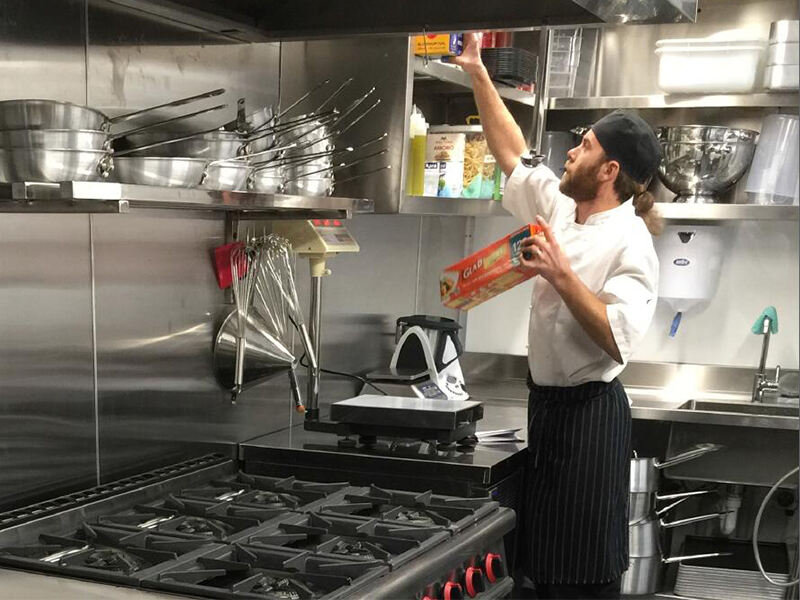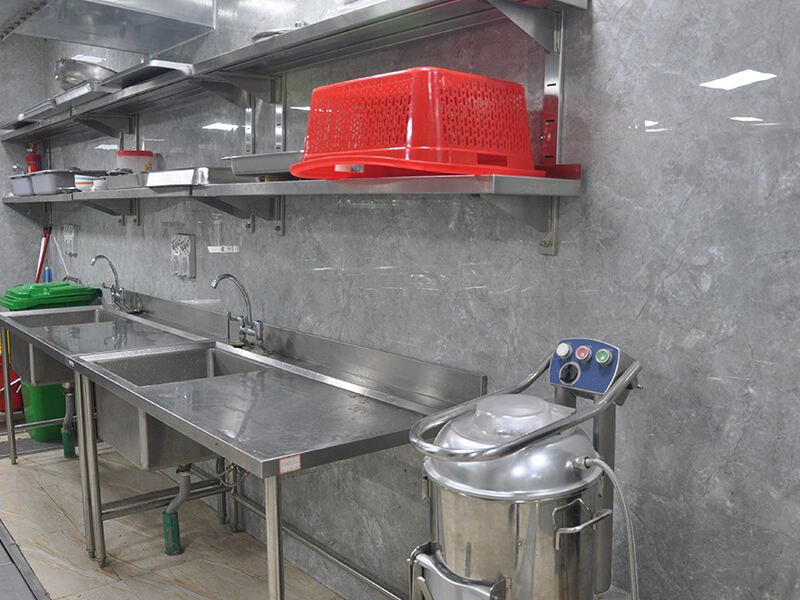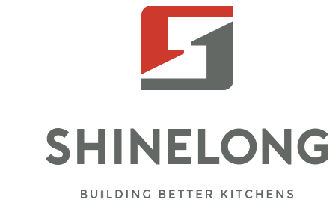News
How to Choose the Appropriate Stainless Steel Shelving for Restaurant Kitchen Zones
Why Restaurants Need Stainless Steel Shelving Units
What is the one item a restaurant truly cannot function without? Most people probably say the commercial electric range, oven, or fridge. While these units are necessary, stainless steel shelving is the key to keeping the entire operation efficient, sanitary, and safe. They are everywhere: beneath prep tables, hanging on walls, and around corners... holding every gadget, piece of cookware, and ingredient container the staff needs.
Furthermore, commercial shelving must survive intense daily use, constant exposure to humidity, cleaning chemicals, and food spills. This is where stainless steel truly outshines other materials like coated wire or aluminum. It is durable, easy to sanitize and clean, and offers far greater corrosion resistance than cheaper alternatives.
However, not all stainless steels are created equal. Choosing between 304, 430, or 201 grades requires consideration beyond just price; it demands precisely matching material performance to the operational environment. A shelving unit near a dish pit, for example, faces entirely different stress than one holding napkins in dry storage. In short, understanding your kitchen zones is paramount before making a purchase.
Stainless Steel Grades Explained: 304, 430, and 201
If stainless steel were people, 304 would be the dependable all-rounder, 430 the practical budget expert, and 201 the low-cost apprentice. The numbers tell you about the mix of chromium, nickel, and other elements that make each type behave differently.
304 stainless steel contains a high amount of chromium (18–20%) and nickel (8–10%), giving it excellent resistance to rust, acid, and salt. It’s the standard in restaurant kitchens worldwide, usually used in sinks, prep tables, and dishwashing areas.
430 stainless steel is ferritic, meaning it contains less nickel and more iron. It’s magnetic, affordable, and still corrosion-resistant, just not as much as 304. This makes it ideal for shelves in dry storage or general utility zones where moisture isn’t a big concern.
201 stainless steel replaces much of the nickel with manganese and nitrogen. That reduces cost but also lowers corrosion resistance. It’s fine for low-moisture zones like dry pantries or office kitchens, but risky near water, steam, or acidic food areas.

Stainless Steel 304 | The Best Option for Wet Zones
When your shelving stands close to sinks, dishwashers, or prep counters, 304 stainless steel is the undisputed champion. It resists the constant assault of moisture, salt, and cleaning agents. Even with daily washing, it won’t discolor or pit easily. Professional kitchens use 304-grade shelves for raw ingredient zones, seafood prep areas, and dishwashing sections. Its smooth surface minimizes bacterial buildup and makes sanitization fast, which is essential for meeting HACCP and NSF hygiene standards.
Though pricier upfront, the long lifespan of 304 shelving often offsets replacement costs. In kitchens with high humidity or frequent steam (such as dim sum restaurants or seafood bistros), 304 pays for itself.
Stainless Steel 430 | Reliable Material for Dry Zones
For less humid areas, for example, wall shelving above prep counters, utensil racks, or bulk storage, there are where 430 stainless steel shows up. It offers a great balance between performance and cost. It’s tough, magnetic, and resistant enough for regular cleaning, provided it’s kept relatively dry.
Many restaurants use 430-grade shelves for spice storage, serving trays, or tools not exposed to direct moisture. It’s also great for decorative wall shelving in front-of-house display kitchens since its finish can be polished to look premium without the high price tag of 304.
That said, 430 steel can develop surface rust if neglected in a humid environment, so regular wiping and ventilation matter. For kitchens on a tighter budget, it’s a practical compromise that doesn’t sacrifice too much durability.
Stainless Steel 201 | Budget Material for Light-Duty Zones
When the budget is tight, 201 stainless steel can be tempting. It looks like 304 from a distance, bright, silvery, and professional, but under the surface, it tells a different story. With reduced nickel content, it’s less corrosion-resistant, making it a risky choice in wet or steamy zones.
However, 201 shelving can perform well in dry, low-impact spaces: think wrapping areas, dining storage, or office break rooms. It’s also common in secondary shelving (where weight and exposure are minimal). The golden rule: keep it dry, and it’ll serve you well enough.

Stainless Steel Grades Comparison & Recommended Kitchen Applications
| Stainless Steel Type | Key Characteristics | Recommended Kitchen Zone | Typical Uses | Corrosion Resistance | Cost Level |
|---|---|---|---|---|---|
| 304 | Contains ~8% nickel and ~18% chromium; excellent corrosion and acid resistance |
Wet zones food prep areas washing stations |
Ingredient shelves, prep tables, dishwashing racks | ★★★★★ | $$$ |
| 430 | 16–18% chromium, nickel-free, magnetic, cost-effective |
Dry zones storage areas utensil racks |
Dry goods shelving, spice racks, and wall-mounted shelves | ★★★☆☆ | $$ |
| 201 | Higher manganese content, lower nickel; reduced corrosion resistance | Dry storage or light-duty use zones | Temporary storage racks, packaging work tables | ★★☆☆☆ | $ |
Durability, Maintenance & Longevity Tips
Even the best steel can’t survive neglect. Regular cleaning with mild detergent, soft cloths, and warm water extends shelf life. Avoid chlorine-based cleaners, because they’re the number-one culprit behind restaurant shelving stainless steel corrosion.
A simple maintenance habit: always dry shelves after washing. Leaving them wet accelerates oxidation, especially for 430 and 201 grades. For high-end kitchens, a quick wipe-down at closing time should be part of every cleaning checklist.
If you notice rainbow-like discoloration, don’t panic; it’s usually mineral residue, not rust. Use a stainless steel conditioner once a month to keep surfaces looking sharp.
Common Mistakes When Choosing Restaurant Shelving
1. Ignoring Environment: Putting 430 shelves near dishwashers is a recipe for rust.
2. Focusing Only on Price: Cheaper steel often costs more long-term when corrosion hits.
3. Mixing Grades Randomly: Leads to uneven appearance and maintenance confusion.
4. Skipping Certification: Always check for NSF or equivalent safety approval.
5. Neglecting Load Rating: Not all shelves can handle the same weight; always check gauge and structure.
Stainless Steel Shelf Load Capacity Reference (per m²)
| Thickness (mm) | Support Type | Static Load Capacity | Recommended Application |
|---|---|---|---|
| 0.8 mm | Single wall-mount / no center beam | 60–80 kg/m² | Light-duty storage (spices, small utensils) |
| 1.0 mm | Leg-supported / reinforced wall-mount | 100–130 kg/m² | Standard kitchen racks (containers, cookware) |
| 1.2 mm | Dual-leg support / mid-beam reinforced | 150–200 kg/m² | Heavy-duty shelves, storage above refrigeration units |
| 1.5 mm+ | Industrial-grade reinforced frame | 250+ kg/m² | Cold storage rooms, butcher prep zones, equipment stands |
FAQs
Q1: Is 430 stainless steel food-safe?
Yes. 430 is food-safe and commonly used for dry storage and utility shelving. However, it is less resistant to corrosion than 304, so avoid locating it in wet or steamy zones.
Q2: Can I mix different stainless steel grades in one kitchen?
Technically yes, but use caution. Mix grades according to zone: place 304 in wet and hygiene-critical areas, 430 in dry zones, and 201 only in light-duty, dry locations. Mixing without planning can lead to uneven wear and maintenance complexity.
Q3: How do I check if a shelf is 304 or 430?
Use a magnet: 430 is magnetic; 304 is normally non-magnetic. The most reliable method is to request material certification or a supplier datasheet confirming the grade.
Q4: What shelf thickness should I choose for heavy pots and containers?
For heavy loads, choose at least 1.2 mm plate with a reinforced mid-beam or consider 1.5 mm+ with industrial frames. Check the shelf's listed static load capacity and ensure the support structure matches the intended use.
Q5: How often should I clean and inspect shelving to prevent corrosion?
Wipe down daily in active zones and perform a monthly deeper clean (mild detergent, warm water). Inspect seals, fasteners, and welds every 3 months. Avoid chlorine-based cleaners, which accelerate corrosion.
 After-Sales:
After-Sales:
 EN
EN
 AR
AR
 HR
HR
 NL
NL
 FI
FI
 FR
FR
 DE
DE
 EL
EL
 HI
HI
 IT
IT
 PT
PT
 RO
RO
 RU
RU
 ES
ES
 TL
TL
 ID
ID
 SL
SL
 VI
VI
 ET
ET
 MT
MT
 TH
TH
 FA
FA
 AF
AF
 MS
MS
 IS
IS
 MK
MK
 HY
HY
 AZ
AZ
 KA
KA
 UR
UR
 BN
BN
 BS
BS
 KM
KM
 LO
LO
 LA
LA
 MN
MN
 NE
NE
 MY
MY
 UZ
UZ
 KU
KU










